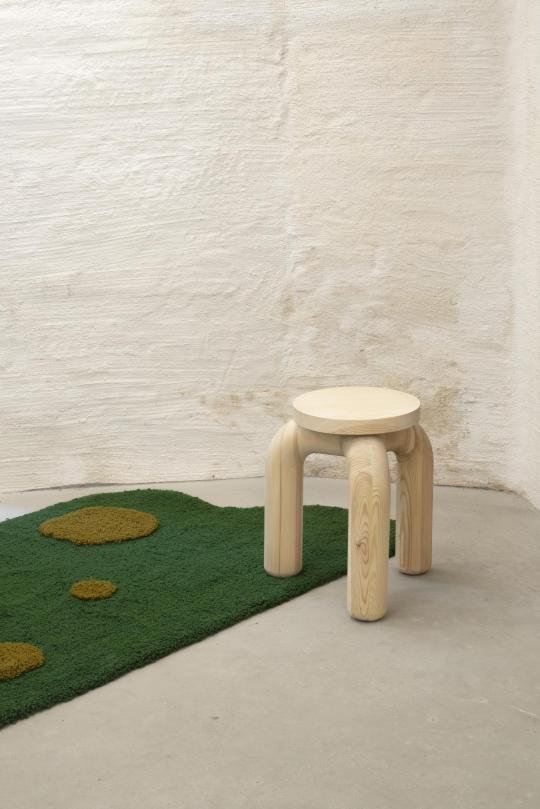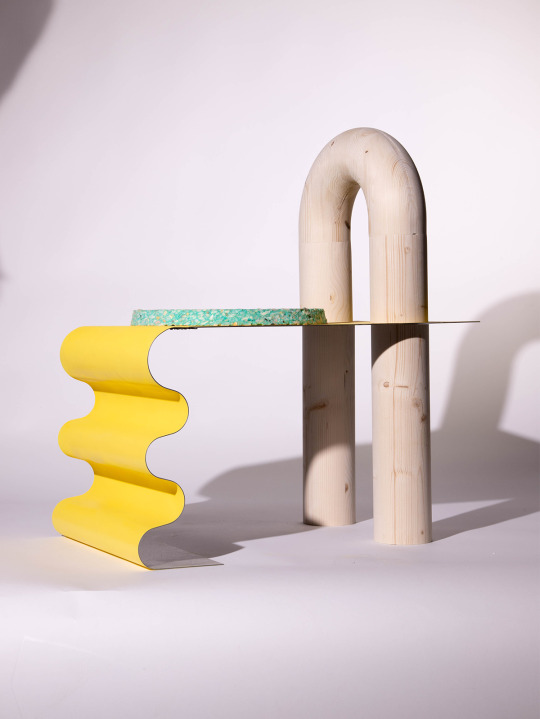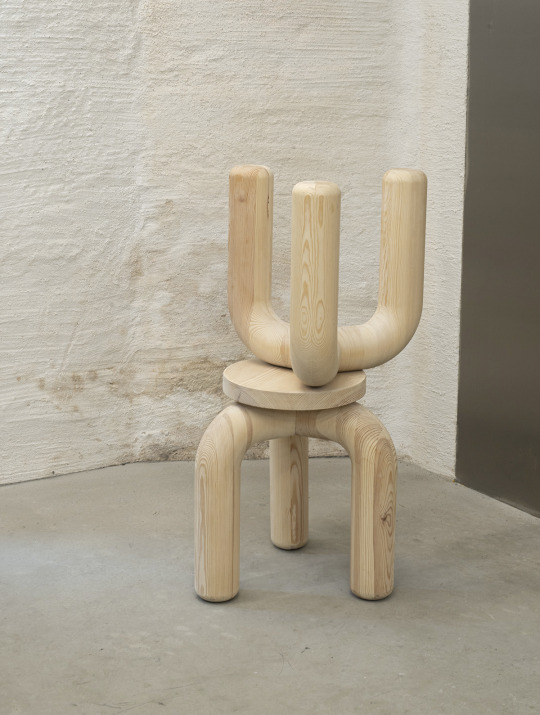#STUDIO SLØYD
Explore tagged Tumblr posts
Text
pinterest's image servers are not a source >:(
correct source -> oslo based studio sløyd, from their 2020 furniture collection furuhelvete

55 notes
·
View notes
Text
0 notes
Text

Studio Sløyd, Furuhelvete Furniture Collection, 2020.
102 notes
·
View notes
Photo
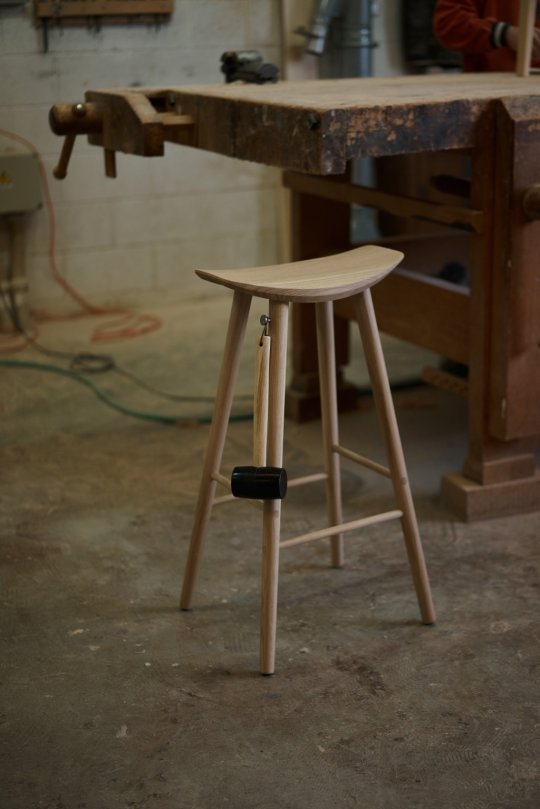

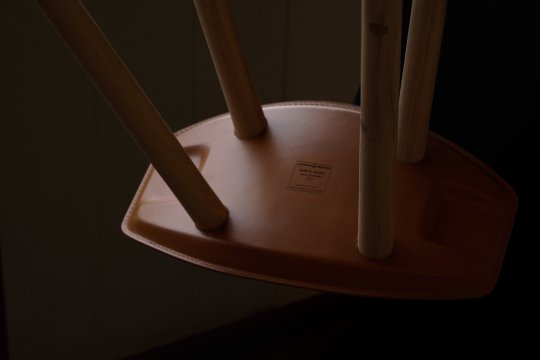
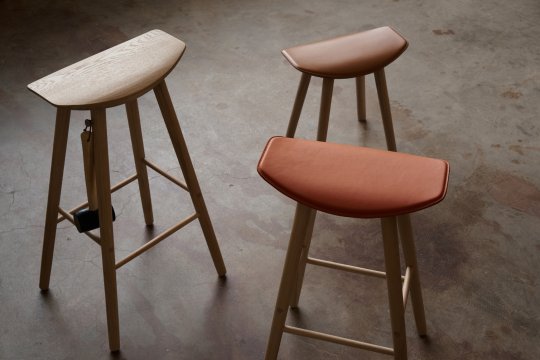
(Sløyd Stool is a minimalist stool designed by Oslo-based studio Snøhetta for Sawaya & Moroniから)
40 notes
·
View notes
Photo
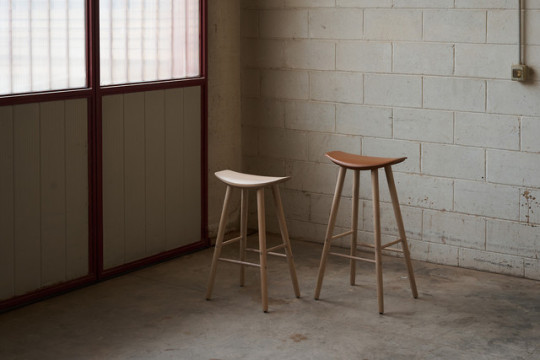
Sløyd Stool is a minimalist stool designed by Oslo-based studio Snøhetta for Sawaya & Moroni. Together with Sawaya & Moroni, an Italian design company known for its uncompromising, high-quality handcraft, Snøhetta has expanded the Sløyd family to include a comfortable seat that provides healthy working positions for its users. The form of the stool is derived from wood shavings and forms a saddle that offers two ways of sitting – traditional and straddle. This allows the user the flexibility and freedom to adjust their posture according to their activity. The product has been handcrafted by picking the finest selection of solid oak wood paired with an optional and elegant Italian leather saddle.
33 notes
·
View notes
Photo

Studio Sløyd's Minimalist Pine Furniture is Rehabilitating a Misunderstood Norwegian Wood - Sight Unseen https://ift.tt/385CtHI
0 notes
Text
The Dezeen guide to wood in architecture, interiors and design
Thinking of using timber in your architecture or design project? Our guide to 15 of the most popular types of wood and wood products has links to hundreds of examples for inspiration.
Ash
Ash is a deciduous hardwood that produces a beautiful pale timber with a grain similar to oak. Versatile, shock-resistant and with no odour, it is widely used for furniture and objects.
Architect R2 Studio used solid ash to create a staircase with a perforated plywood bannister in a London domestic extension while Hannah clad an off-grid cabin in upstate New York with infested ash wood. In Valencia, Francesc Rifé Studio used ash throughout the interiors of a facial and dental clinic named Swiss Concept (above).
See projects featuring ash ›
Bamboo
Bamboo is a type of grass rather than a tree but its fast-growing canes are widely used in architecture and design both in their natural state and processed into wood-like lumber and fibres.
Bamboo canes are used for the structure, walls and doors of this clothing factory in Colombia by Ruta 4 (above), while designer David Trubridge has reissued his Cloud lighting collection using bamboo strips instead of plastic.
See projects featuring bamboo ›
Beech
Native to Europe, beech is a hard, heavy, fine-textured hardwood widely used in furniture making and as a flooring material. It is also commonly used as a veneer and the timber is suitable for steam bending. Beech wood ranges from creamy white to pink or red in colour.
Designer David Ericsson created the Madonna chair from solid beech for Swedish brand Gärsnäs while Peca designed cylindrical furniture with beech wood dowels (above.)
See projects featuring beech ›
Cedar
This coniferous softwood is weather-resistant, making it suitable for cladding including shingles as well as outdoor furniture. It has a fragrant aroma and insect-repelling qualities.
The wood comes from a handful of species of genuine cedar trees that grow at high altitudes including Lebanon cedar and Cyprus cedar.
Additionally, there is a range of American conifers that are commonly described as cedars, including western red cedar and Atlantic white cedar, which are technically different species.
Cedar-clad buildings are particularly common in America. Bates Masi Architects used oversized cedar shingles for the cladding of this home in the Hamptons (above and top) while HGA Architects and Engineers covered these Vermont dwellings in cedar boards.
See projects featuring cedar ›
Cherry
The wood of the cherry tree has a warm reddish colour that darkens with age. It is fine-grained and easy to work, making it a popular choice for furniture and homewares as gives a rich tone to interiors.
Azman Architects used cherry wood to create partitions in a London apartment while John Pawson paired the timber with limestone for his Jil Sander store in Tokyo (above.)
See projects featuring cherry ›
Chestnut
The sweet chestnut tree produces timber with a brown or reddish-brown colour and a coarse texture. It is suitable for outdoor uses including cladding, shingles, decking and outdoor furniture, as well as for indoor furnishings and objects.
Architect K-Studio used chestnut wood for the lattice of a Greek holiday home, (above,) while designer Mikyia Kobayashi built an electric mobility scooter from the timber.
See projects featuring chestnut ›
Cork
The bark of the cork oak tree has come into favour in recent years as a material for both architecture and design projects. As well as having a pleasantly musty smell it has good insulation properties and is fire resistant, making it appropriate for internal and external cladding.
Its noise reduction properties, sponginess and durability make it suitable for flooring as well while the sustainable way cork is harvested without damaging the tree gives it good environmental credentials. On top of this, cork can be recycled.
Architect Matthew Barnett Howland demonstrated the versatility of cork by building a recyclable house from the material, (above,) while Jasper Morrison is one of the designers who has used cork conglomerate to make furniture.
See projects featuring cork ›
Douglas fir
Native to western North America, Douglas fir is an evergreen conifer. A softwood, it is a type of pine rather than a true fir and is commonly grown as a Christmas tree. Its timber is pinkish to red in colour.
Douglas fir, which is also known as Oregon pine, is widely used in construction. Architectural uses include the cladding on this barn-like house in England (above) by Elliott Architects and the exposed structure of this cabin in the Netherlands by Crafted Works.
See projects featuring Douglas fir ›
Larch
Larch is a deciduous conifer that grows throughout the northern hemisphere. The heartwood is usually red or brown in colour. Tough and durable with waterproof qualities, larch is widely used outdoors for fencing and cladding as well as boat-building.
Projects using larch include Arklab's twin houses in Germany that are clad in untreated larch and a house in Scotland by Mary Arnold-Forster Architects that is clad in burnt larch (above.)
See projects featuring larch ›
Maple
There are around 200 species of maple, ranging from shrubs to large trees identifiable by their pairs of winged seeds and five-lobed leaves.
This deciduous hardwood is widely harvested for timber, which has a fine grain and ranges in colour from white to golden or red. The wood is used for a variety of indoor purposes including furniture and objects and is particularly prized as a flooring material for sports halls and dance venues.
Designer Thomas Heatherwick created a modular desk with wooden planter legs made from maple (above), while architect Naturehumaine clad a staircase in angular panels of solid timber as part of a renovation of a Montreal apartment.
See projects featuring maple ›
Oak
There are around 500 different species of oak tree, many of which produce hard, durable, versatile timber that can be used structurally, for external and internal cladding, for doors and windows and furniture and flooring.
Architect Thomas-McBrien used oak to clad the interior of this kitchen extension in London (above), while this off-grid cabin by Out of the Valley has a structure of oak beams constructed using traditional joinery techniques.
Oak furniture includes Cecilie Manz's Workshop table for Muuto, which has a solid oak frame and an oak veneer top.
See projects featuring oak ›
Pine
There are dozens of species of pine. It is a coniferous softwood, often with a yellow or reddish colour and containing many small knots that give pine objects and interiors a rustic look, plus a distinctive sharp scent.
Many types of pine trees grow quickly, making their wood cheaper than other timbers. This partly explains pine's widespread use in construction and joinery. More hardwearing than other softwoods, pine is also widely used for flooring and staircases.
Architectural uses include the slatted cladding on this beach house in Chile by LAND Arquitectos (above), and this Swedish lakeside house by Dive Architects, while design projects that use pine include a furniture collection by Studio Sløyd that attempts to revive interest in a type of timber that has fallen out of fashion in recent years.
See projects featuring pine ›
Spruce
Spruce is a genus of evergreen coniferous tree native to the northern hemisphere. One of the most widely used of all timbers, spruce wood is often confused with pine but is generally lighter and softer with a creamy white, pale yellow or red-brown colour.
A softwood, spruce is easy to work with and is used extensively in construction, including structural elements and internal and external cladding, in the production of plywood and in carpentry.
Architectural uses include the cave-like interior of this suite at a luxury resort in Greece designed by Tenon Architecture and the panelled interior of Kvadrat's design studio in Copenhagen (above) by Caruso St John.
See projects featuring spruce ›
Sycamore
Sycamore is the name given to a range of deciduous hardwood trees including the European sycamore, maple sycamore and American plane. It is often confused with maple and has similar-shaped leaves and winged seeds.
The timber is white to light brown with a fine grain, sometimes featuring a speckled pattern.
Susceptible to rot if it gets wet, the timber is not generally used for construction or outdoor purposes but as it has no odour and does not stain it is widely used for kitchen implements as well as furniture and objects.
Designer Faye Toogood used sycamore for a range of furniture while architect Giles Reid used the timber for a bar in a Japanese restaurant in London (above).
See projects featuring sycamore ›
Walnut
Walnut is a dense hardwood that polishes well and often has an attractive colour and an intricately patterned grain. It is particularly suitable for carving and furniture making while walnut veneers are prized by luxury car brands and cabinet makers.
Popular varieties include European (also known as English) walnut and black walnut, which is native to the USA.
Furniture that makes use of walnut includes the 50th-anniversary edition of Arne Jacobsen's Lily Chair, which is finished in a walnut veneer, while architect Scott Whitby Studio designed a bedroom that features bespoke walnut furniture (above.)
See projects featuring walnut ›
Wood products
Numerous material products are made from wood and there are many ways of treating wood to change its appearance and performance. Here are some of the best-known.
Blackened wood
Blackened wood is increasingly popular as a way of finishing natural timber, particularly for cladding and furniture. The surface of the timber is blackened by singeing it.
Cross-laminated timber
Cross-laminated timber (CLT) is an engineered construction product made of strips of wood bonded together with their grains at right angles to each other for rigidity. It can be used for small buildings like the woodland cabin by Otraum Architects (above), and is strong enough to use structurally, including for tall buildings such as the proposed 13-storey Dock Mill tower by Urban Agency.
Plywood
Plywood is made of thin veneers of wood glued together with crisscrossing grains to produce sheets that can be used for internal cladding, structures and even for external use when protected from the weather adequately, plus a wide range of products.
Birch plywood is particularly prized due to its fine grain and silky appearance.
Architects Diana Salvador and Javier Mera used plywood to build a cabin in Equador for themselves beside a river in Puerto Quito (above), while Toledano + Architects used steam-bent plywood to create a sinuous partition in this Paris apartment.
Steam-bent timber
Some types of wood can be formed into curves by subjecting them to steam, which softens the material and allows it to be bent in a mould. Steam-bent timber is widely used to produce furniture as well as cladding and features such as bannisters.
Chipboard
Chipboard, also known as particle board, is a cheaper engineered product consisting of small pieces of wood bonded together into boards.
Oriented strand board
Oriented strand board (OSB) is made of larger strands of wood arranged so their grains run in different directions and then compressed and bonded. It can be used for larger architectural projects, like this house in Alicante, Spain (below).
Recent popular wooden projects on Dezeen include a cork and cross-laminated timber extension to a traditional Catalan house, a pair of timber-clad cabins on a coastal hillside in Chile, a cosy woodland cabin in Finland and a wooden tofu factory in the mountains of eastern China.
The post The Dezeen guide to wood in architecture, interiors and design appeared first on Dezeen.
0 notes
Photo

Studio Sløyd's Furuhelvete collection challenges perceptions of "outdated" pine furniture http://www.houseoffashion.co.za/studio-sloyds-furuhelvete-collection-challenges-perceptions-of-outdated-pine-furniture/
0 notes
Photo

Studio Sløyd's Furuhelvete collection challenges perceptions of "outdated" pine furniture https://ift.tt/2PILzBd March 05, 2020 at 09:00AM
0 notes
Text
The Dezeen guide to wood in architecture, interiors and design
Thinking of using timber in your architecture or design project? Our guide to 15 of the most popular types of wood and wood products has links to hundreds of examples for inspiration.
Ash
Ash is a deciduous hardwood that produces a beautiful pale timber with a grain similar to oak. Versatile, shock-resistant and with no odour, it is widely used for furniture and objects.
Architect R2 Studio used solid ash to create a staircase with a perforated plywood bannister in a London domestic extension while Hannah clad an off-grid cabin in upstate New York with infested ash wood (above.)
See projects featuring ash ›
Bamboo
Bamboo is a type of grass rather than a tree but its fast-growing canes are widely used in architecture and design both in their natural state and processed into wood-like lumber and fibres.
Bamboo canes are used for the structure, walls and doors of this clothing factory in Colombia by Ruta 4 (above), while designer David Trubridge has reissued his Cloud lighting collection using bamboo strips instead of plastic.
See projects featuring bamboo ›
Beech
Native to Europe, beech is a hard, heavy, fine-textured hardwood widely used in furniture making and as a flooring material. It is also commonly used as a veneer and the timber is suitable for steam bending. Beech wood ranges from creamy white to pink or red in colour.
Designer David Ericsson created the Madonna chair from solid beech for Swedish brand Gärsnäs while Peca designed cylindrical furniture with beech wood dowels (above.)
See projects featuring beech ›
Cedar
This coniferous softwood is weather-resistant, making it suitable for cladding including shingles as well as outdoor furniture. It has a fragrant aroma and insect-repelling qualities.
The wood comes from a handful of species of genuine cedar trees that grow at high altitudes including Lebanon cedar and Cyprus cedar.
Additionally, there is a range of American conifers that are commonly described as cedars, including western red cedar and Atlantic white cedar, which are technically different species.
Cedar-clad buildings are particularly common in America. Bates Masi Architects used oversized cedar shingles for the cladding of this home in the Hamptons (above and top) while HGA Architects and Engineers covered these Vermont dwellings in cedar boards.
See projects featuring cedar ›
Cherry
The wood of the cherry tree has a warm reddish colour that darkens with age. It is fine-grained and easy to work, making it a popular choice for furniture and homewares as gives a rich tone to interiors.
Azman Architects used cherry wood to create partitions in a London apartment while John Pawson paired the timber with limestone for his Jil Sander store in Tokyo (above.)
See projects featuring cherry ›
Chestnut
The sweet chestnut tree produces timber with a brown or reddish-brown colour and a coarse texture. It is suitable for outdoor uses including cladding, shingles, decking and outdoor furniture, as well as for indoor furnishings and objects.
Architect K-Studio used chestnut wood for the lattice of a Greek holiday home, (above,) while designer Mikyia Kobayashi built an electric mobility scooter from the timber.
See projects featuring chestnut ›
Cork
The bark of the cork oak tree has come into favour in recent years as a material for both architecture and design projects. As well as having a pleasantly musty smell it has good insulation properties and is fire resistant, making it appropriate for internal and external cladding.
Its noise reduction properties, sponginess and durability make it suitable for flooring as well while the sustainable way cork is harvested without damaging the tree gives it good environmental credentials. On top of this, cork can be recycled.
Architect Matthew Barnett Howland demonstrated the versatility of cork by building a recyclable house from the material, (above,) while Jasper Morrison is one of the designers who has used cork conglomerate to make furniture.
See projects featuring cork ›
Douglas fir
Native to western North America, Douglas fir is an evergreen conifer. A softwood, it is a type of pine rather than a true fir and is commonly grown as a Christmas tree. Its timber is pinkish to red in colour.
Douglas fir, which is also known as Oregon pine, is widely used in construction. Architectural uses include the cladding on this barn-like house in England (above) by Elliott Architects and the exposed structure of this cabin in the Netherlands by Crafted Works.
See projects featuring Douglas fir ›
Larch
Larch is a deciduous conifer that grows throughout the northern hemisphere. The heartwood is usually red or brown in colour. Tough and durable with waterproof qualities, larch is widely used outdoors for fencing and cladding as well as boat-building.
Projects using larch include Arklab's twin houses in Germany that are clad in untreated larch and a house in Scotland by Mary Arnold-Forster Architects that is clad in burnt larch (above.)
See projects featuring larch ›
Maple
There are around 200 species of maple, ranging from shrubs to large trees identifiable by their pairs of winged seeds and five-lobed leaves.
This deciduous hardwood is widely harvested for timber, which has a fine grain and ranges in colour from white to golden or red. The wood is used for a variety of indoor purposes including furniture and objects and is particularly prized as a flooring material for sports halls and dance venues.
Designer Thomas Heatherwick created a modular desk with wooden planter legs made from maple (above), while architect Naturehumaine clad a staircase in angular panels of solid timber as part of a renovation of a Montreal apartment.
See projects featuring maple ›
Oak
There are around 500 different species of oak tree, many of which produce hard, durable, versatile timber that can be used structurally, for external and internal cladding, for doors and windows and furniture and flooring.
Architect Thomas-McBrien used oak to clad the interior of this kitchen extension in London (above), while this off-grid cabin by Out of the Valley has a structure of oak beams constructed using traditional joinery techniques.
Oak furniture includes Cecilie Manz's Workshop table for Muuto, which has a solid oak frame and an oak veneer top.
See projects featuring oak ›
Pine
There are dozens of species of pine. It is a coniferous softwood, often with a yellow or reddish colour and containing many small knots that give pine objects and interiors a rustic look, plus a distinctive sharp scent.
Many types of pine trees grow quickly, making their wood cheaper than other timbers. This partly explains pine's widespread use in construction and joinery. More hardwearing than other softwoods, pine is also widely used for flooring and staircases.
Architectural uses include the slatted cladding on this beach house in Chile by LAND Arquitectos (above), and this Swedish lakeside house by Dive Architects, while design projects that use pine include a furniture collection by Studio Sløyd that attempts to revive interest in a type of timber that has fallen out of fashion in recent years.
See projects featuring pine ›
Spruce
Spruce is a genus of evergreen coniferous tree native to the northern hemisphere. One of the most widely used of all timbers, spruce wood is often confused with pine but is generally lighter and softer with a creamy white, pale yellow or red-brown colour.
A softwood, spruce is easy to work with and is used extensively in construction, including structural elements and internal and external cladding, in the production of plywood and in carpentry.
Architectural uses include the cave-like interior of this suite at a luxury resort in Greece designed by Tenon Architecture and the panelled interior of Kvadrat's design studio in Copenhagen (above) by Caruso St John.
See projects featuring spruce ›
Sycamore
Sycamore is the name given to a range of deciduous hardwood trees including the European sycamore, maple sycamore and American plane. It is often confused with maple and has similar-shaped leaves and winged seeds.
The timber is white to light brown with a fine grain, sometimes featuring a speckled pattern.
Susceptible to rot if it gets wet, the timber is not generally used for construction or outdoor purposes but as it has no odour and does not stain it is widely used for kitchen implements as well as furniture and objects.
Designer Faye Toogood used sycamore for a range of furniture while architect Giles Reid used the timber for a bar in a Japanese restaurant in London (above).
See projects featuring sycamore ›
Walnut
Walnut is a dense hardwood that polishes well and often has an attractive colour and an intricately patterned grain. It is particularly suitable for carving and furniture making while walnut veneers are prized by luxury car brands and cabinet makers.
Popular varieties include European (also known as English) walnut and black walnut, which is native to the USA.
Furniture that makes use of walnut includes the 50th-anniversary edition of Arne Jacobsen's Lily Chair, which is finished in a walnut veneer, while architect Scott Whitby Studio designed a bedroom that features bespoke walnut furniture (above.)
See projects featuring walnut ›
Wood products
Numerous material products are made from wood and there are many ways of treating wood to change its appearance and performance. Here are some of the best-known.
Blackened wood
Blackened wood is increasingly popular as a way of finishing natural timber, particularly for cladding and furniture. The surface of the timber is blackened by singeing it.
Cross-laminated timber
Cross-laminated timber (CLT) is an engineered construction product made of strips of wood bonded together with their grains at right angles to each other for rigidity. It can be used for small buildings like the woodland cabin by Otraum Architects (above), and is strong enough to use structurally, including for tall buildings such as the proposed 13-storey Dock Mill tower by Urban Agency.
Plywood
Plywood is made of thin veneers of wood glued together with crisscrossing grains to produce sheets that can be used for internal cladding, structures and even for external use when protected from the weather adequately, plus a wide range of products.
Birch plywood is particularly prized due to its fine grain and silky appearance.
Architects Diana Salvador and Javier Mera used plywood to build a cabin in Equador for themselves beside a river in Puerto Quito (above), while Toledano + Architects used steam-bent plywood to create a sinuous partition in this Paris apartment.
Steam-bent timber
Some types of wood can be formed into curves by subjecting them to steam, which softens the material and allows it to be bent in a mould. Steam-bent timber is widely used to produce furniture as well as cladding and features such as bannisters.
Chipboard
Chipboard, also known as particle board, is a cheaper engineered product consisting of small pieces of wood bonded together into boards and can be used for larger architectural projects like this house in Alicante, Spain (below).
Oriented strand board
Oriented strand board (OSB) is made of larger strands of wood arranged so their grains run in different directions and then compressed and bonded.
Recent popular wooden projects on Dezeen include a cork and cross-laminated timber extension to a traditional Catalan house, a pair of timber-clad cabins on a coastal hillside in Chile, a cosy woodland cabin in Finland and a wooden tofu factory in the mountains of eastern China.
The post The Dezeen guide to wood in architecture, interiors and design appeared first on Dezeen.
0 notes
Text
Studio Sløyd's Furuhelvete collection challenges perceptions of "outdated" pine furniture
https://static.dezeen.com/uploads/2020/03/studio-sl%C3%B8yd-pine-furniture-design_dezeen_2364_sq-852x852.jpg
Designers Studio Sløyd developed a collection of chunky pine chairs to demonstrate a contemporary take on a wood it feels is unfairly neglected.
The Furuhelvete furniture collection currently comprises a chair and a stool designed by Studio Sløyd to explore different characteristics of pine wood. A forest-coloured rug completes the set.
Pine grows abundantly in Norway and has been used for centuries for building houses and making furniture, but has fallen out of fashion.
Designers Herman Ødegaard, Mikkel Jøraandstad and Tim Knutsen observed that the use of pine declining in recent years. They want to help re-establish its reputation as an attractive and reliable material.
“Furuhelvete is a Norwegian expression stemming from the overuse of pine in Norwegian homes and cabins, often associated with a style that is considered distasteful or outdated,” Studio Sløyd explained.
“With the Furuhelvete collection we wish to challenge the traditional perception of the wood and create a new interest for this local and wonderful material.”
The design trio exhibited their work at the Stockholm Furniture Fair, where they told Dezeen that the collection will expand to include a table, cabinet, lamp and bench, all made using pine.
“We want to make pieces that work with the structure of the wood and to highlight its positive qualities by creating more contemporary shapes,” explained Jøraandstad.
The three-legged stool was produced using a computer-controlled milling machine, resulting in a chunky profile that Jøraandstad described as “a big canvas to showcase the material”.
The solidity of the form provides a counterpoint to the perception of pine as a material used in poor-quality construction. A special joint was devised to create a seamless and sturdy intersection between the three pieces.
This chair also aims to demonstrate how a wood that is often thought to be too soft for furniture making can be used to create a robust and attractive product.
A gently curved seat is supported by a tripod frame that intersects with a minimal backrest. Both seating designs are left unfinished to highlight the attractive wood grain and were carefully hand sanded to create a smooth, high quality finish.
The rug was designed as a romanticised abstraction of a Norwegian pine forest in autumn. It was made by Ødegaard using a traditional hand-tufting process and took around a month to produce.
In addition to their aesthetic and functional properties, the pieces are intended to help communicate important social and environmental messages.
“We still import wood to make furniture which has a huge environmental cost,” Jøraandstad pointed out. “This is so unnecessary when we have such a great material on our doorstep.”
“We imagine these pieces would look great in contemporary Scandinavian homes,” he added. “Right now this is a starting point to encourage designers in Scandinavia to use the material more.”
Ødegaard, Jøraandstad and Knutsen founded Studio Sløyd while studying at the Oslo School of Architecture and Design.
They will all graduate this year and plan to continue developing projects that focus on exploring and respecting materials.
Students from the Estonian Academy of Arts also presented a collection of furniture at the fair that offered a unique take on a material. Dig Where You Stand is set of six objects made from limestone, a material that is usually only used for surfaces.
Swedish designer Kajsa Melchior used an unusual method of sand-casting to create her collection Fictive Erosion, which was also showcased at the Stockholm Furniture Fair.
The post Studio Sløyd's Furuhelvete collection challenges perceptions of "outdated" pine furniture appeared first on Dezeen.
Source link
from http://www.houseoffashion.co.za/studio-sloyds-furuhelvete-collection-challenges-perceptions-of-outdated-pine-furniture/
0 notes
